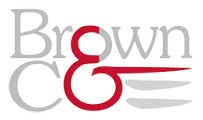Scenario and goals
Company "P," a major player in the industry and trade services sector, requested to conduct an organizational check-up of the Company's administrative function in order to identify opportunities for improvement in terms of:
- operational efficiency;
- Timeliness in processing information requested by management;
- Quality of cross-functional information exchanges;
- reporting system;
- organizational structure of the administrative function, from a "Group" perspective, in the short and medium to long term;
Process steps
The intervention was developed according to three key phases:
1. Fact-finding survey of the Company
This phase produced a clear "snapshot" of the "Group" in general and more specifically of the Administrative Function, in terms of the personnel involved, the activities performed and the tools, computer and manual, used.
2. Processing of information acquired
An "information support" was established on which strategic and organizational reasoning could be based.
3. Formalization of Results and Operational Suggestions.
At the end of this phase, a report was prepared to organically summarize the results achieved by the above elaborations, and formalize the guidelines for organizational and strategic choices previously discussed and agreed upon with management.
Actions
1. Interviews were conducted with management and other personnel indicated to us by management in order to gain a sufficiently thorough understanding:
- Of the organizational structure;
- Of the "Group's" business and administrative impacts;
- Of the management's wishes in terms of the performance of administrative staff and the output of their activities
Information about workloads and the distribution of activities among the various resources of the function, as well as technical and functional information about the Information System in use at the time, was also acquired through a special methodology.
2. The information acquired at the end of the previous phase was subjected to processing such as, for example, aggregation of activities performed and definition/assessment of workloads, assessment of the level of use of the Information System, etc...
3. Drafting of a final report, which, in particular made it possible to highlight:
- critical areas susceptible to improvement (e.g., duplication of activities, excessive manual labor in operations, ...).
- hypotheses for the short- and medium- to long-term organizational structure of the administrative function.
- Suggestions for improvement in the "lead times" of administrative processes.
Results
The work allowed drawing suggestions for improvement in the quality (meaningfulness, reliability...) of information generated by the administrative function.
The final report was the starting point for activating subsequent actions for the implementation phase of the identified organizational and process improvements.

